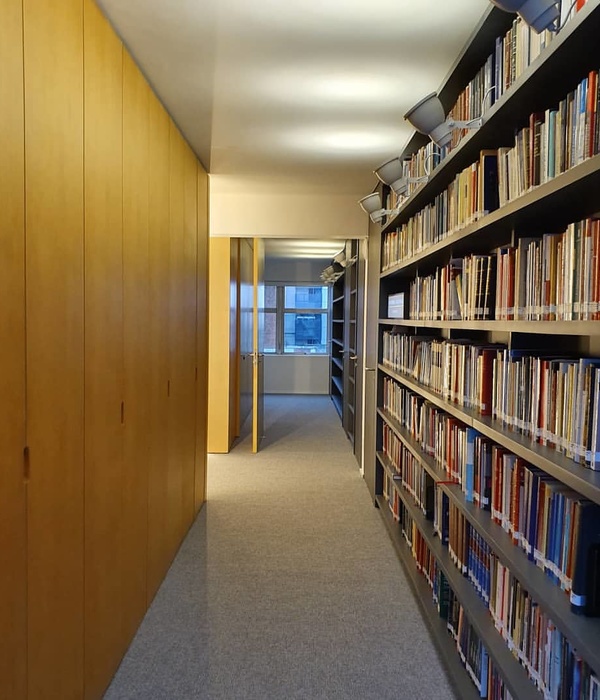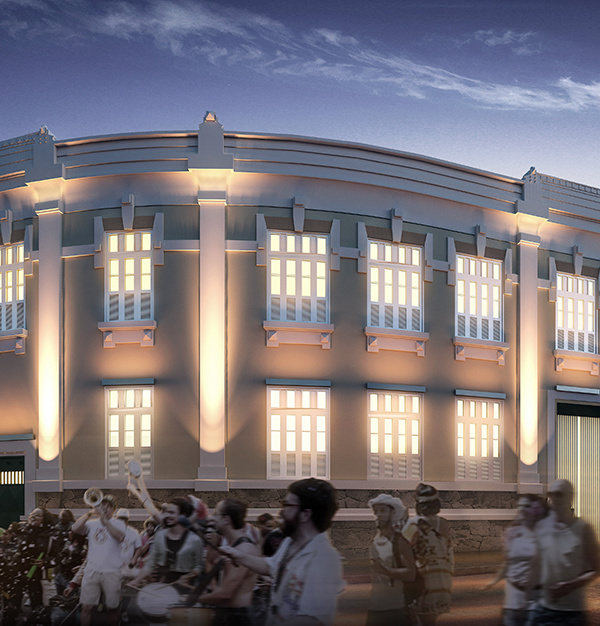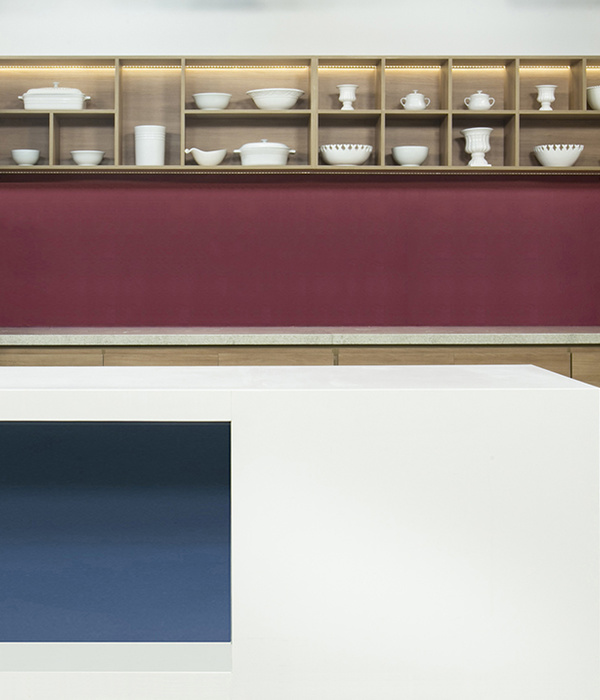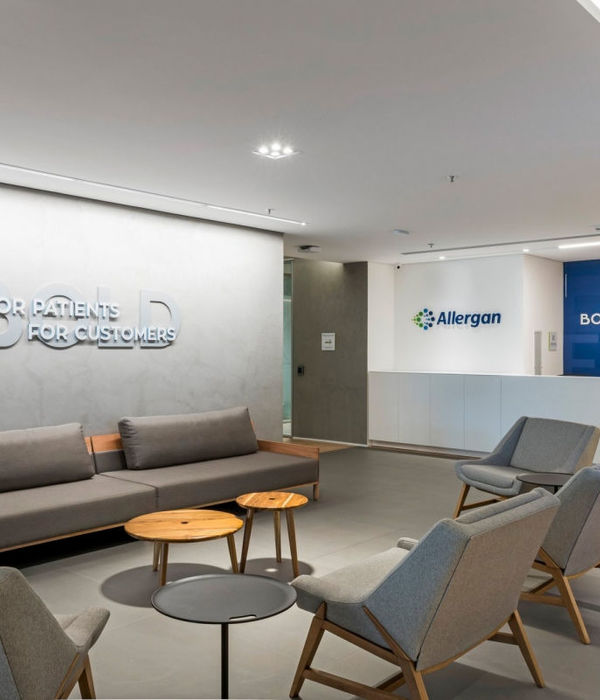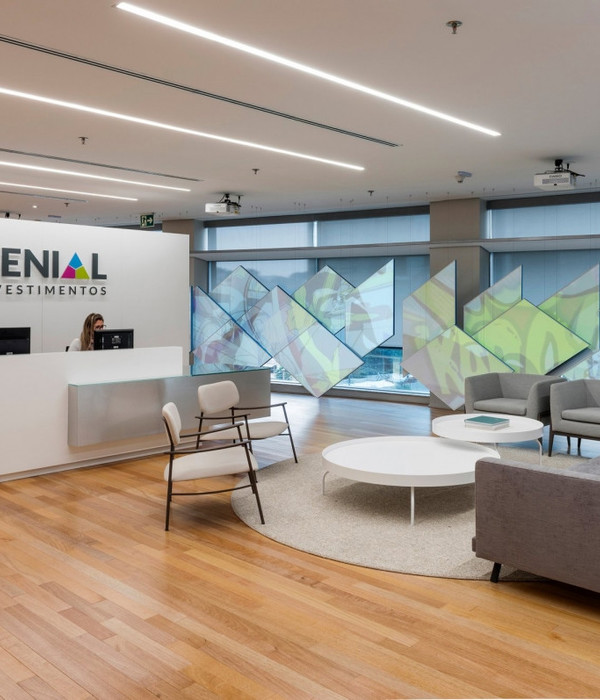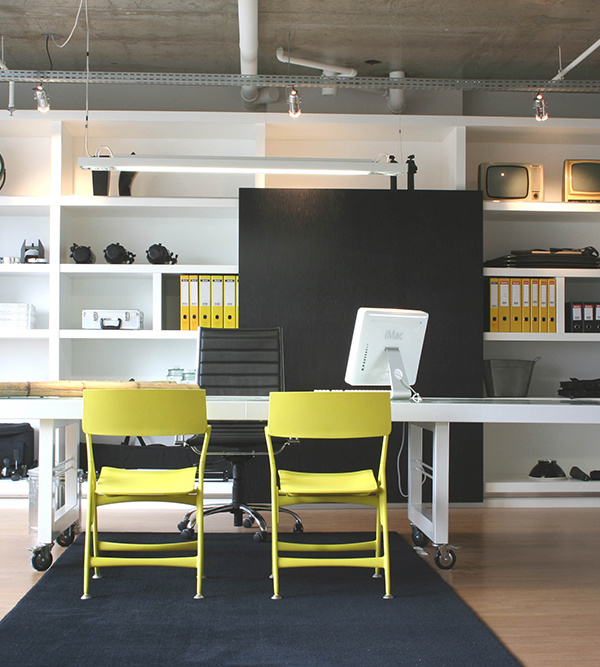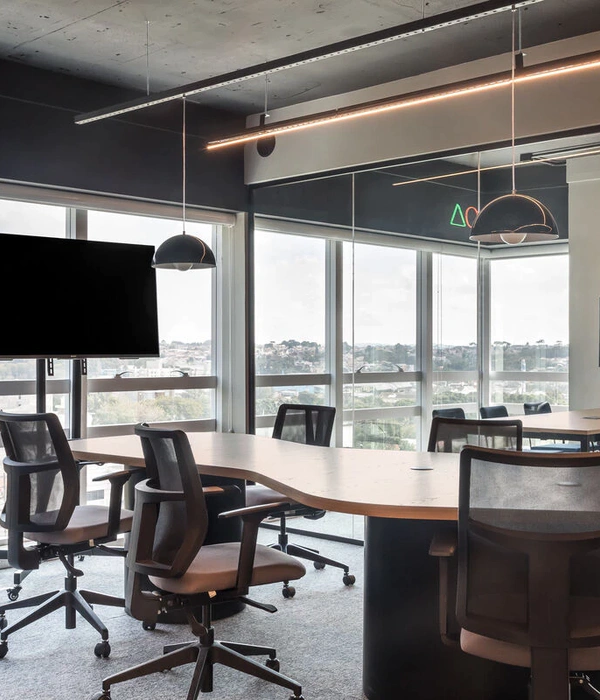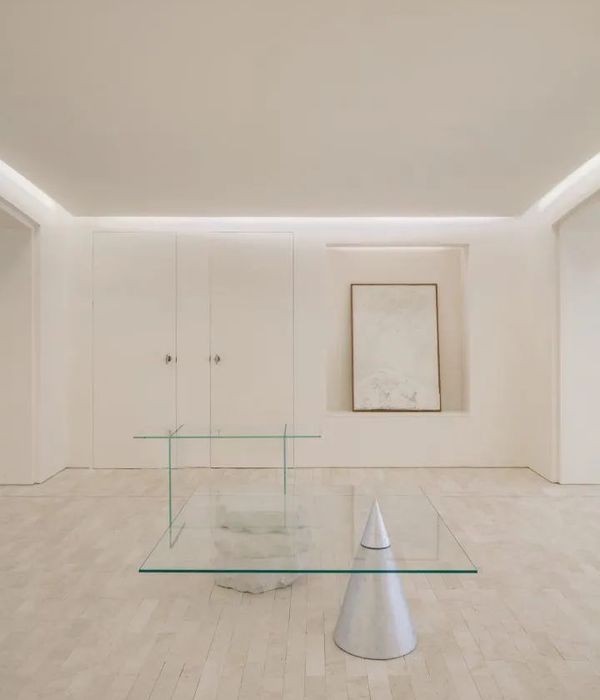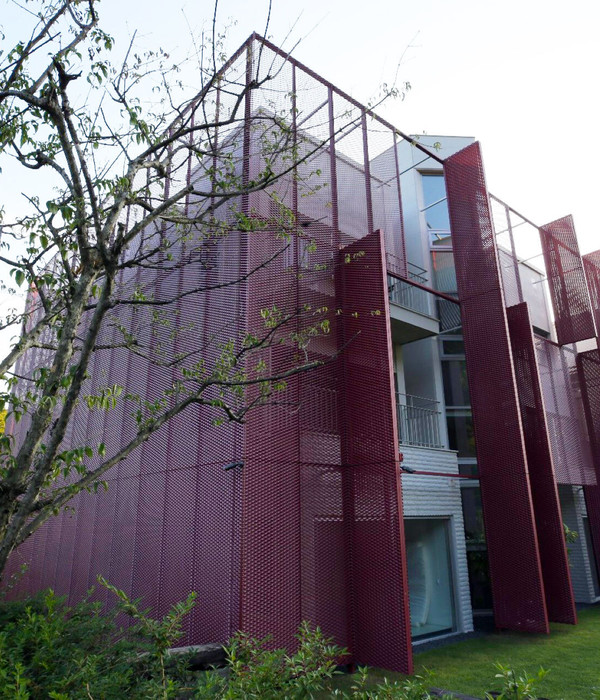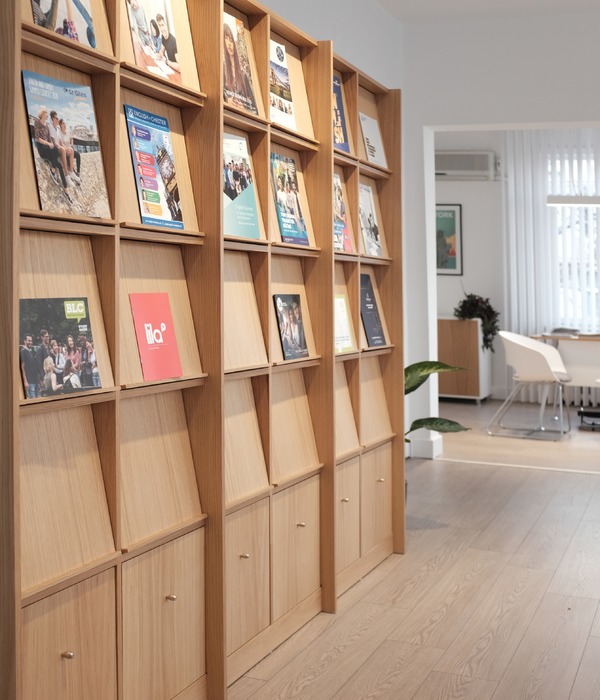合作建筑师Borja Gómez、Andreia Faley、Carlos Sambricio农业工程师Almud ena García Barcarizo项目管理Gonzalo Tello需要支付Victoria Blázquez结构David García、Jorge de Prado、Beatriz SUárez空调Federico Reguero、Naiara Moreno、Alejandro Liu NoemíBarbero WaterGorka的电力设施Federico Reguero Tello,Borja Gómez建筑管理Gonzalo Tello施工执行管理María Victoria Blázquez Constructor INBISA更多规格少规格
Collaborating Architects Borja Gómez, Andreia Faley, Carlos Sambricio Agricultural Engineer Almudena García Barcarizo Project Management Gonzalo Tello Costs Victoria Blázquez Structures David García, Jorge de Prado, Beatriz Suárez Air conditioning Federico Reguero, Naiara Moreno, Alejandro Liu Light Noemí barbero Water Gorka Figur Electricity Elena Guezuraga Process Facilities Federico Reguero Interior design Gonzalo Tello, Borja Gómez Construction management Gonzalo Tello Construction Execution Management María Victoria Blázquez Constructor INBISA More Specs Less Specs
© Aitor Ortiz
C.Aitor Ortiz
架构师提供的文本描述。新的酿酒厂必须满足葡萄酒旅游计划的需要,并根据内部葡萄酒的特点,考虑到生产高质量白葡萄酒所需的条件,包括在葡萄酒学领域的最新发展和技术。
Text description provided by the architects. The new winery, as well as taking care of what is required for the production of high quality white wines by incorporating the latest developments and technology in the field of oenology, had to satisfy a wine tourism programme and generate an attractive image in keeping with the character of the wines produced within.
© Aitor Ortiz
C.Aitor Ortiz
该项目的关键方面之一是通过以下策略将酿酒厂与景观及其葡萄园结合起来:-选择地块的高点,周围是葡萄园,旁边是一组使景观独特的树木。-充分利用地形,使建筑物半埋,从而减少视觉冲击力。-建立地面规划,适应地形,并将生产和游客区与具有更多工业特征的装瓶和储存区分开设置。-通过花园斜坡将装货区的景观整合起来,这样就不会从周围的环境中看到它。-选择小范围的材料作为外观,其颜色和演变随着时间的推移,与葡萄园的颜色和发展全年。-酒厂内的视觉连接,与位于楼上的大窗户和露台之间的景观连接。
One of the key aspects of the project was the integration of the winery with the landscape and its vineyard by means of the following strategies: - Choosing a highpoint of the plot for the location, surrounded by vineyards and next to a group of trees that make the landscape unique. - Making the most of the topography to keep the building half buried, thus reducing visual impact. - Floorplan establishment, adapting to the terrain and setting the production and visitor’s area apart from the bottling and storage areas, which have a more industrial character. - Landscape integration of the loading area through garden slopes, so that it is not perceived from the surroundings. - Choosing a small range of materials for the façade, their colour and evolution over time playing along with the colours and development of the vineyard throughout the year. - Visual connection from inside the winery with the landscape trough big windows and terraces on the upper floor.
© Aitor Ortiz
C.Aitor Ortiz
另一方面,有必要纳入一个以游客为重点的小型社会方案,以促进该地区的葡萄酒旅游。游客可在一条独立的道路上进出,远离仓库的装卸处,穿过葡萄园,以酿酒厂为背景,仿佛是从天空中剪裁出来的,背景是Rueda村。入口位于地势的最高点。这与半埋式酿酒厂的设置一起,使得社会和行政计划与生产计划的水平不同,按层次将用途分开。从这个层次上看,可以通过俯瞰葡萄园的露台和门廊看到精化过程,并与外部景观或直接景观有视觉联系。
On the other hand, it was necessary to incorporate a small social programme focused on visitors, promoting wine tourism in the area. Access for visitors takes place along an independent path, away from the loading and unloading bays at the warehouse, through the vineyard and with the winery as a backdrop, as if cut out from the sky, and with the village of Rueda in the background. The entrance is situated at a high point of the plot. This, along with the half-buried winery set-up, allows for the social and administrative programme to be on a different level to that of the production one, segregating uses by levels. From this level, it is possible to see the elaboration process and to have a visual connection with the exterior landscape or a direct one, through the terraces and porches that overlook the vineyard.
© Aitor Ortiz
C.Aitor Ortiz
生产区被认为是一个单一的单元,围绕着一个由雕刻的楼梯井控制的中央核旋转。在它周围,有实验室,木桶室和品尝室,把混凝土罐放在一边,不锈钢的放在另一边。
The production area is conceived as a single unit that revolves around a central nucleus governed by a sculptured stairwell. Around it, there’s the laboratory, the cask room and the tasting room, leaving the concrete tanks to one side and the stainless steel ones on the other.
Axonometrica
axonometric(几何学上)轴测法的
酒厂的结构采用6个壁式门廊和10米跨度的大混凝土梁,支撑着长达14m的双T预制板。后者负责给内部空间和外部体积一个单一的形象,赋予酒厂它的身份。
The structure of the winery was solved by 6 wall porticoes and great concrete beams that clear a 10 m span, which support double-T prefab slabs up to 14m long. The latter are responsible for giving the interior space and exterior volume a unitary image, giving the winery its identity.
© Aitor Ortiz
C.Aitor Ortiz
有限的材料被用于建筑,在最后的处理中,我们可以在葡萄酒生产和装瓶单元中找到相同的材料:混凝土、钢铁、木材和玻璃。依靠简朴的建筑,游客们将通过生产要素的设置和处理、内部区域和这些区域与景观和葡萄园之间的联系以及酒厂的旅游体验来感受到,因此没有必要进行任何华丽的建筑或材料的使用。
A limited range of materials were used for construction, using for the finishing touches the same ones that we can find in the wine production and bottling units: concrete, steel, wood and glass. Leaning on the an austere architecture, the image visitors will perceive will be generated by how the production elements are set and dealt with, the connection between the inside areas and that of these with the landscape and the vineyard, as well as the winery tour experience, making it unnecessary for any florid construction or use of materials.
Basement level
该设计考虑了可持续的方面,例如通过生物质锅炉产生热量,为蓄水池和花园浇水节约雨水,经过净化后再利用旧水浇灌葡萄园,最大限度地利用地形的水和温度稳定的条件,重力饲料葡萄接收,强化隔热,被动太阳能保护,室内自然光照与光电感应器调节LED照明等相结合。
The design took into account sustainable aspects such as the generation of heat through a biomass boiler, the saving of rainwater for cisterns and watering of gardens, the reutilization of used water, after a purification process, for the watering of the vineyards, making the most of the terrain’s water and temperature stable conditions, gravity-feed grape reception, reinforced thermal insulation, passive solar protection, natural illumination of interior areas combined with LED lighting regulated by photoelectric sensors, etc.
© Aitor Ortiz
C.Aitor Ortiz
Architects IDOM
Location Rueda, Valladolid, Spain
Project Manager Gonzalo Tello Elordi
Lead Architect Gonzalo Tello
Area 3690.0 m2
Project Year 2017
Photographs Aitor Ortiz
Category Winery
Manufacturers Loading...
{{item.text_origin}}

